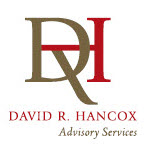Audit Surveys and Programs
Internal & Performance Auditing
by David R. Hancox, CIA, CGFM
Audit Surveys & Audit Programs – Week 7 ©
- Preliminary Survey
- Establishes the feasibility of the assigned project
- Defines the area as one of significant risk – that warrants the auditors attention
- Determines the objectives are attainable
- Determines the planned procedures are workable
- Contrast overall audit survey leading to annual audit plan vs. audit plan for each audit
- Top-Down Approach vs. Bottom-Up Approach
- Bottom-Up Approach
- Procedures
- Transactions
- Top-Down Approach
- Results
- Objectives
- Controls
- Bottom-Up Approach
- Blank Mind Approach vs. Skeptical Approach
- Blank Mind
- No Opinion
- No thoughts about wrong doing
- Skeptical Approach
- Scientific Theory
- Have a Hypothesis and test it
- Blank Mind
- Elements of Preliminary Work
- Overview
- Assessing Risk – Inherent, Control, Detection – audit will have impact (cost savings etc.)
- Defining objectives
- Reviewing pertinent department and organization files
- Defining criteria to be used in evaluation
- Researching authoritative literature
- Interviewing Management
- Preparing or modifying audit tools
- Coordinating Efforts
- Developing the Audit Plan
This is a dynamic process that seeks to obtain as much information as possible to make informed decisions.
- Routine vs. Non-routine Efforts
- Defining Objectives
- Recurring Audits
- early definition minimizes confusion, avoid wasting time
- Non-recurring Audits
- Objectives must fill management’s needs
- Objectives must be feasible
- Objectives should be articulated clearly and understood by all parties.
- Recurring Audits
- Defining Objectives
- Reviewing Pertinent Department and Organizational RecordsWith Respect to the agency to be audited:
- Organization structure
- Names and Titles of Personnel involved in area
- Nature of the product or service provided
- Goals and objectives of the unit to be audited
- Procedures and methods of recordkeeping
- Trends in operating results
- Reports of accomplishments
- Business Plans
- Budgeting Performance
- Management Concerns
- Operational Difficulties
- Tour – ObservationsWith Respect to the Audit approach:
- Workable objectives
- Audit Procedures that might be used
- Analytical techniques
- Nature and extent of testing
- Tentative Time Requirements
- Potential Problem areas
- Staffing considerations
- Researching Authoritative Literature
- Library searches
- Past news articles
- Industry magazines
- Government publications
- Internet Searches
- Defining Criteria to be used
- Without proper criteria – the audit is fundamentally flawed
- Enabling legislation
- Goals and standards
- Interviewing management
- Gain information on policies and practices
- Agree on audit objectives
- Coordinate timing of audit
- Obtain assistance if needed
- Audit Tools
- Audit Program
- Questionnaires – checklists
- Audit Software
- Sampling considerations
- Developing the Audit Plan (Planning Memo)
- Must justify why we are going to allocate scarce resources to a particular area
- Some assessment of risk should be available
- Reasonable assurance – cost/benefit
- Overview
- Audit Programs
- A detailed plan of action for the work of the auditor
- Provides a guide for the field work
- Tells the auditor:
- What work to perform
- To what extent to perform it
- In what order and when it should be performed and by whom
- How much time is to be spent doing it
- Tells the auditor:
- It is the link between the survey and the field work – prepared after survey and audit plan
- Program Format:
- Individual design
- Pro-forma – “canned audit programs”
- All programs should be flexible enough to allow for auditors to exercise professional judgment
- Benefits:
- Systematic Plan – allows for agreement by staff and supervisors
- Provides a basis for assigning work
- Provides a means of controlling and evaluating the progress of work
- Allows for comparison of what was performed to what was planned
- Assists in training inexperienced staff members
- Provides a summary record of work done
- Aids in subsequent audits
- Timing:
- Prepared after the survey – but always subject to change and addition
- Audit Scope:
- As defined by the audit standards:
- Reliability and integrity of information
- Accurate, reliable, timely, complete, useful
- Compliance with policies, plans, procedures, laws and regulations
- Safeguarding assets
- Theft, fire, improper use
- Economical and efficient use of resources
- Underutilized facilities
- Nonproductive work
- Procedures which are not cost justified
- Overstaffing or understaffing
- Accomplishing established goals and objectives
- Economical: Prudent management, use to best advantage without waste
- Efficient: Minimizing loss or energy when producing something
- Effective: able to accomplish something
- Reliability and integrity of information
- As defined by the audit standards:
- Preparing Audit Programs:
- Background – so the auditor knows what is need to be done
- Objectives, risks and controls
- Be specific: What does “determine whether adequate competition was obtained” mean? Determine if 3 written bids were obtained.
- Include auditor doing work, date completed, reference to specific workpapers
Homework
- Read Chapter 9 in Government Performance Audit in Action.
